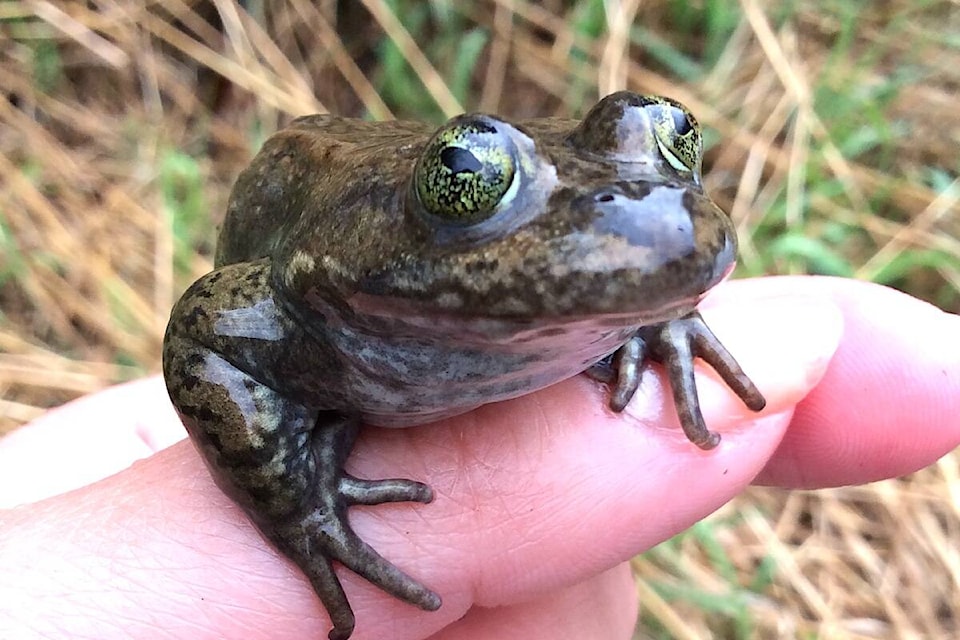Climate change with its sizzling heat and damaging drought conditions is doing a real number on critically endangered frogs.
Aleesha Switzer, a biologist with the Fraser Valley Conservancy specializing in frogs, has been closely monitoring climate impacts across the Fraser Valley region.
And the news is not good.
ŌĆ£The past year was really challenging for frogs and salamanders,ŌĆØ Switzer said.
Frogs can be a keystone species, or ŌĆ£the canary in the coal mineŌĆØ in terms of indicating climate effects.
ŌĆ£IŌĆÖm worried about what the future holds for them.ŌĆØ
The Oregon Spotted Frog recovery team conducted its annual spring counts of frog egg masses in Chilliwack, Abbotsford, Agassiz, and Harrison Mills.
ŌĆ£The numbers of egg masses laid by these frogs were low this year,ŌĆØ Switzer reports. ŌĆ£While the numbers do fluctuate naturally, even in healthy populations, seeing declines is always nerve-wracking when you are dealing with a critically endangered species.ŌĆØ
Smaller populations, at extreme risk of extirpation, also saw significantly fewer egg masses this year.
The Maria Slough OSF population in Agassiz saw 35 per cent fewer egg mass this year compared to the five-year average.
While the FVC reps can hope this is just a low year for the frogs, that they will bounce back again next year, the outlook is ŌĆ£bleak,ŌĆØ Switzer warned.
The largest known population, referred to as Morris Valley near Harrison Mills, saw 20 per cent fewer egg masses laid this year than the five-year average.
ŌĆ£The number is just on the threshold of being high enough to keep it safe from extirpation, or localized extinction.ŌĆØ
The exact cause is unknown.
ŌĆ£Was the heat dome too intense for sensitive adults and juveniles in shallow wetland habitats? Did flooding events tear frogs away from home ranges, leaving them stranded or unable to find their mates?ŌĆØ she asked.
But results of this yearŌĆÖs breeding surveys serve as a stark reminder that climate change impacts ŌĆ£are very realŌĆØ and the consequences are dire.
ŌĆ£We need to take action, and we need it now,ŌĆØ Switzer said.
The most significant impact comes from the sustained heat and drought.
Amphibians are wholly dependent on water as many start their lives as tadpoles in ponds. In a drought situation, tadpoles can perish if their pond dries up or overheats. As drought is often accompanied by intense heat, frogs and salamanders on land can overheat and desiccate, resulting in death.
ŌĆ£We need everyone to step up and help however they can.ŌĆØ
Here are some from their website, and .
To get involved, check out their webpage for climate change information and nature-based solution tips.
RELATED:
RELATED:
Something to add to this story, or a story tip? Email:
jfeinberg@theprogress.com
Like us on and follow us on .



